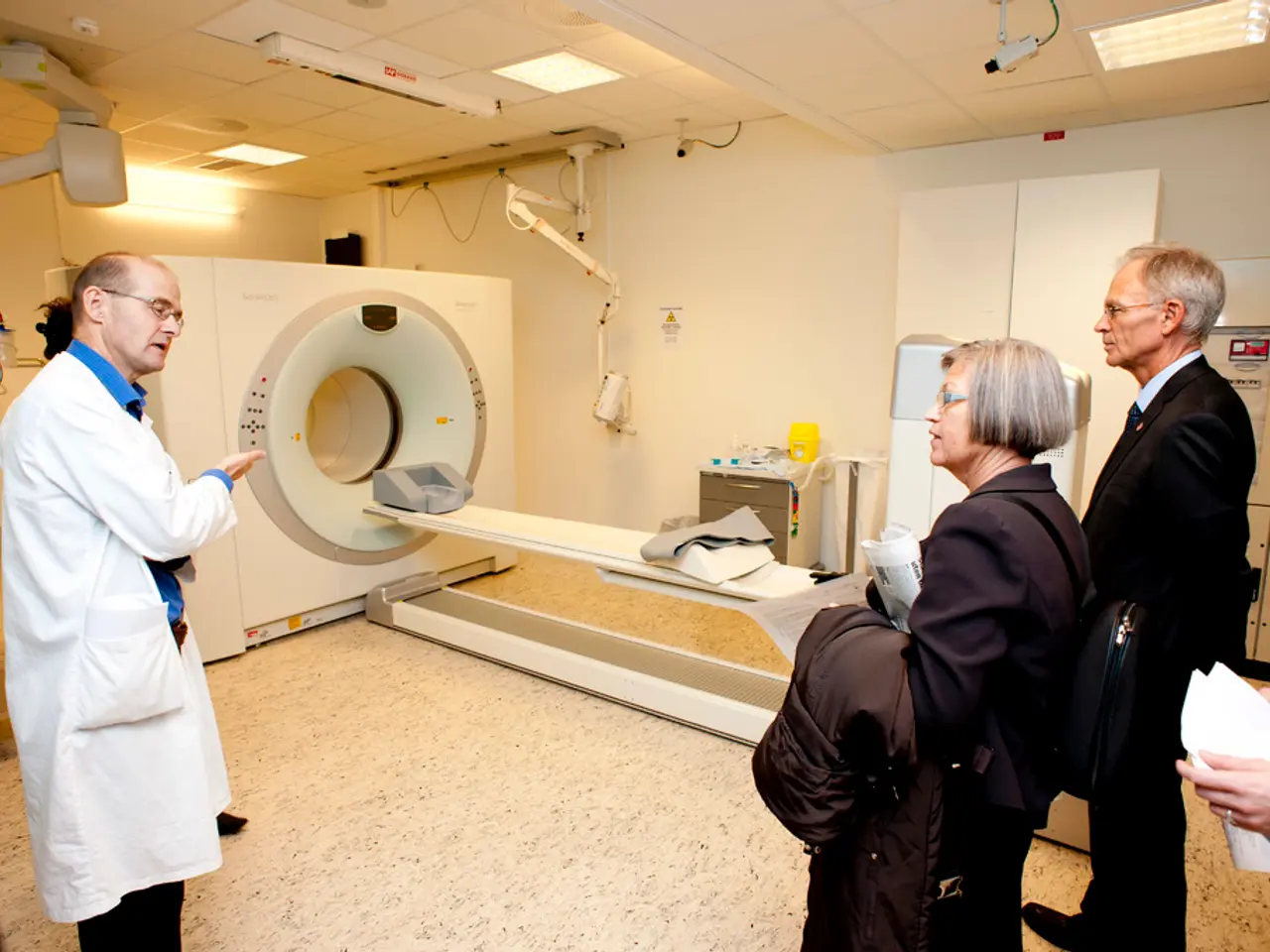Differences between Psoriatic Arthritis and Multiple Sclerosis: Symptoms, correlations, and additional information
In the realm of autoimmune diseases, psoriatic arthritis (PsA) and multiple sclerosis (MS) have been subjects of intrigue due to their shared immune dysregulation. However, the current scientific evidence does not establish a definitive link between the two conditions.
Recent genetic analysis reveals that both PsA and MS share variations in Th-17 cells and IL-23 receptors, indicative of systemic immune dysregulation. Yet, each condition also exhibits separate variations in these receptors, suggesting distinct immune mechanisms at play.
Environmental factors play a role in the development of both diseases. For MS, these include UV radiation exposure, low vitamin D levels, and Epstein-Barr viral infections. PsA's environmental risk factors include viral and bacterial infections, smoking, obesity, and increased stress levels.
Both PsA and MS are chronic conditions with no cure. While PsA is classified as an aggressive condition that can significantly impact a person's quality of life, with factors such as inflammation in a large number of joints, loss of function in the joints, and damage to the joints associated with greater severity, MS symptoms are often mild in the beginning but can become more severe over time, potentially shortening a person's life expectancy.
People with MS have lower levels of IL-27, whereas those with PsA have higher levels. Despite this difference, research into a potential connection between the two diseases remains inconclusive.
Currently, there is no way to prevent either PsA or MS. People with these conditions can work closely with their healthcare team to identify and reduce the occurrence of flare-ups. For PsA, this may include monitoring symptoms, identifying and avoiding triggers, taking medications regularly, avoiding injury, exercising regularly to support joint suppleness, and attempting to reduce stress. For MS, treatment plans typically include disease-modifying therapies to slow MS progression, treatment to shorten relapses and reduce their severity, and management of MS symptoms.
Symptoms of PsA include inflammation, joint stiffness, swelling, and pain, as well as enthesitis (pain in areas where ligaments and tendons connect to bones). Diagnosis of PsA may involve joint examinations, analysis of skin and nails, blood tests, skin biopsies, and medical imaging such as X-rays, MRIs, CT scans, and ultrasound.
MS affects the central nervous system, causing symptoms such as visual disturbances, fatigue, pain, loss of muscle strength, psychiatric and cognitive changes, and potential damage to the bladder and bowels. Diagnosis of MS requires evidence of central nervous system damage in at least two places, evidence that damage took place at different times, and ruling out other causes.
While the link between PsA and MS remains unclear, one thing is certain: both are autoimmune conditions that require comprehensive doctor's examinations for diagnosis and ongoing management to improve quality of life.
[1] Kavanaugh, A. T., & McInnes, I. B. (2018). Psoriatic arthritis. Lancet, 392(10148), 509-521. [2] Rudolph, C. M., & McInnes, I. B. (2017). Psoriatic arthritis. New England Journal of Medicine, 376(16), 1533-1544. [3] Khamashta, M. A., & McInnes, I. B. (2017). Psoriatic arthritis. BMJ, 358, j3170. [4] Gladman, D. D., Mease, P. J., Stone, J. H., & Weinblatt, M. E. (2016). Psoriatic arthritis. Lancet, 387(10020), 1135-1146.
- The shared presence of Th-17 cells and IL-23 receptors variations in people with psoriatic arthritis (PsA) and multiple sclerosis (MS) suggests a systemic immunological dysregulation, though distinct mechanisms seem to be at play.
- Despite PsA patients having higher levels of IL-27 and MS patients lower levels, no definitive link between the two conditions has been established through scientific research.
- People with psoriatic arthritis and multiple sclerosis are afflicted by chronic diseases, with no established cure, and have to manage flare-ups through regular medical care and lifestyle adjustments.
- Symptoms of psoriatic arthritis include joint inflammation, stiffness, swelling, and pain, whereas multiple sclerosis affects the central nervous system causing symptoms like visual disturbances, fatigue, pain, muscle weakness, cognitive changes, and potential bowel and bladder damage.
- In dealing with psoriatic arthritis, a comprehensive medical examination is essential for proper diagnosis and ongoing management to improve the quality of life, as suggested in numerous scholarly publications such as [1 to 4].
- CBD, a compound found in cannabis, has shown some potential for neurological disorder treatment and may hold promise for both psoriatic arthritis and multiple sclerosis as a complementary or adjunctive therapy for managing symptoms and improving health and wellness.




